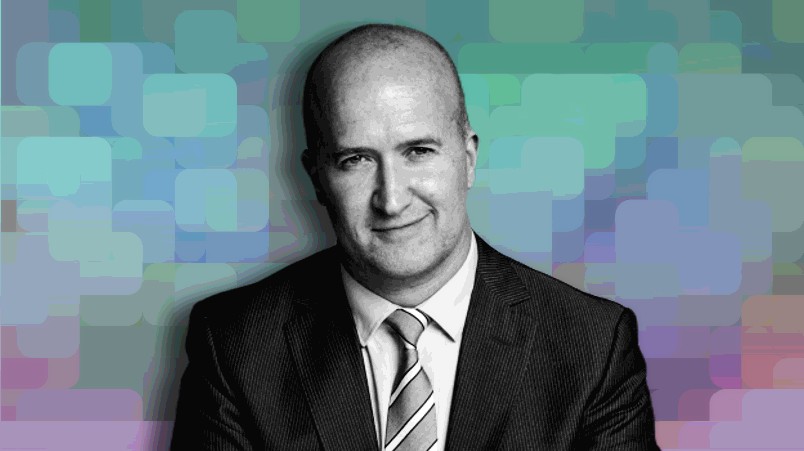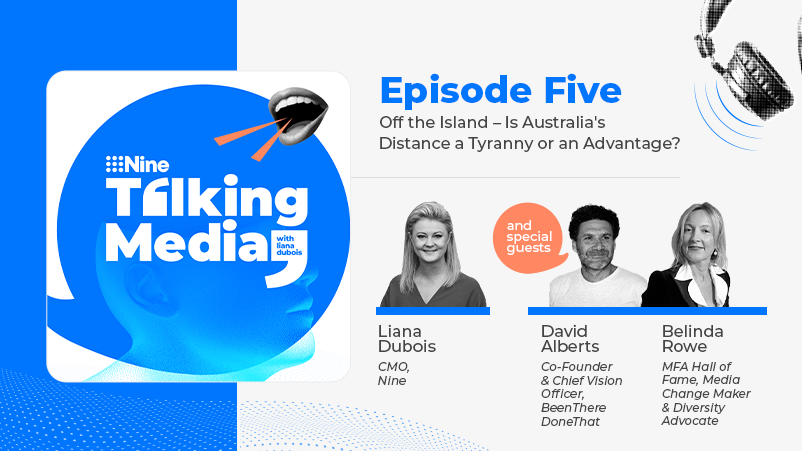Adore Beauty CMO on returning to growth after ecom reality check, getting 200k podcast downloads a month, non-naïve loyalty gains, and why he tells teams to run – and review – martech as if it’s their own business

Dan Ferguson, CMO Adore Beauty. Customer Loyalty proved to ebb the moat that protected the brand against the harshest reversals in Australian ecomm after shops reopened post lockdown
After riding the Covid e-commerce swell to peak at $200m in revenues, Adore Beauty found itself dumped heavily when the economy reopened and everyone raced back into shops. The first half of 2022 brought choppy waters for the growth, profitability and even survival for plenty of other big-name Australian e-commerce brands. Booktopia, Kogan, and Temple and Webster faced heavy headwinds, while online furniture brand Brosa went under. But Adore doubled down on driving customer engagement, built a new app and tightened its grip on marketing costs, returning to growth in the past year. CMO Dan Ferguson says the P&L tells a story of resilience. But he says marketers thinking naively about loyalty may be in for a rude awakening. Plus, why Ferguson thinks the tide going out has opened the floodgates to a lot more martech reviews.
What you need to know:
- Adore Beauty is growing again. Even though last year delivered a 9 per cent decline in revenues, losses were front-loaded, and the second half tipped it back into growth – just.
- The loyalty of its customers provided the brand with a moat against the worst of the reversals in the online retail market. Three-quarters of its FY23 revenues came from returning customers with its loyalty members alone providing 63 per cent of revenues in the first half, which also now appears to be the low watermark in Australia for Adore and other e-commerce vendors.
- The P&L really tells a story of resilience, says CMO Dan Ferguson.
- The brand built strong engagement with its audience; its podcast attracts between 100,000 and 200,000 listeners a month.
- New product launches, strong growth in private labelling efforts – including a tripling of SKUs – and much greater insights from first-party data courtesy of its app are helping to turn around the top line.
- A commitment to cost control, with some martech consolidation thrown in, is also contributing to the bottom line, and has helped reduce the marketing costs percentage in H2 2023.
- Ferguson says its good to review the martech stack – and tells teams to run it like their own business: If they are not using a platform or function, seek to renegotiate the deal, "or what's next".
- Company culture has proven to be an anchor, as have resilient commercial partnerships, such as Adore's decade-long relationship with Emarsys, meaning it's survived the fraught SaaS renewal cycle multiple times, from Adore's start-up, through scale up and post-IPO phase.
- New initiatives are now rolling out. This week head of brand Chelsea Healy unwrapped an expansion of Adore's investment in the sexual wellness category. The collaboration with Selina Nguyen and Sunroom sees the launch of "The Pleasure Space" – a "dedicated, free self-discovery tool".
We rode the growth. And, whilst it's hard to keep annualising that growth ... in the first six weeks of this financial year, we reported 5.9 per cent year-on-year growth. It's a positive trend.
Perspective does not operate at the speed of the web. It takes time, draws breath, and laughs at our capacity for hubris. While it’s clear now that the massive surge in e-commerce during the early days of the pandemic was not sustainable, it was tempting to believe otherwise.
In the first half of calendar 2022, the wave broke, and the tide rolled back hard. Australia’s major grocers Woolworths and Coles both experienced big e-commerce reversals of roughly equal scale. Woolworths CEO Brad Banducci admitted the pullback was faster and more dramatic than he anticipated.
Some of the best-known Australian etailers had a truly terrible H1, FY2022, tracking the familiar path from rooster to feather duster in just a few short months with the reopening of the economy revealing just how highly leveraged their business models are:
- Temple and Webster's revenues dropped 12 per cent, profits tanked 46 per cent.
- Booktopia’s 15 per cent revenue reversal turned into a 68 percent EBITDA rout.
- Kogan took a 34 per cent hit to revenues and saw profitability evaporated, booking a $23.8 million loss.
At least they survived. The same can’t be said for the online furniture outlet Brosa, which collapsed and was ultimately bought by Kogan for $1.5 million.
Adore Beauty wasn’t spared. It took a 17 per cent hit to revenues in the first half of 2022 and the next period was also painful. However it finally returned to growth in the most recently completed half.
When I last spoke with Dan Ferguson during the first year of the pandemic, that was all still ahead of him. Adore Beauty’s sales were skyrocketing and the company was shipping stock as fast as it could get it out the door. However, even though at the time he might have been forgiven for even a small indulgence, Ferguson was already trying to understand how much of the change in consumer behaviour was sustainable. Had the floor lifted, or was he managing through an aberration, with an inevitable return to trend when shoppers finally emerged from their caves, blinking into the sunlight?
The first half of 2022 answered that question and then kept answering it for two more halves.
It was always a possibility, and some might argue a likelihood. For Ferguson, who rode the rollercoaster up and down, and whose brand is now once again back on a growth path, what the numbers really reveal is the story of resilience.
Adore’s FY23 revenue for the full year fell from $200m to $181m, a decline of 9.6 per cent. But it is really a story of a year in two halves; the second half actually grew YoY, albeit by half a percentage point.
The loyalty effect
They say brand is a moat, and in Adore Beauty’s case that certainly rings true. A little over three quarters of full year FY23 revenue came from returning customers and it is also noteworthy that in H1 FY23, 63 per cent of revenue came from Adore’s loyalty customers.
“We hit $200 million or thereabouts at peak pandemic and in 2023, we reduced revenue by 9 per cent. That’s a macro line. Underneath that is resilience," Ferguson said.
“So the second half of the year we returned to growth, the second half of the year we also improved marketing cost performance.
“We rode the growth. And, whilst it's hard to keep annualising that growth, we're returning to growth. In the first six weeks of this financial year, we reported 5.9 per cent year-on-year growth. It's a positive trend.”
That return to growth is not uniform across the online retail sector.
“We all responded differently," said Ferguson. “Where do you find that growth, is it from new versus repeat customers? How well are you placed to really generate more LTV (lifetime value) from existing customers? And what are you going to do for those customers to get that?”
He also noted that when it comes to new customers, there’s much more competition in the market.
“E-commerce teams, digital teams, businesses out there, are reworking their equations around what is profitable to invest in.”
For Ferguson, a big part of Adore’s recovery comes from filling out the scaffolding around its loyalty program, but he stresses: “Our customers where loyal before we had a loyalty program.”
The app limbo bar
The development of Adore's app has played a central part in building loyalty system capabilities, and gave its best customers a new avenue to express that loyalty.
“There is a limbo bar in terms of what app icons you have on your phone. If I don't use them regularly, even if I care about those brands, they're out of there," he said. "When you provide the app to your best customers, they also respond by buying more frequently, and when they do, they purchase more. And it's a source of data so that you could serve them better.”
“At a core level, it's the loyalty program, and outside of the loyalty program it's finding ways to be closer to your customer."
In a world of deprecating cookies, and a growing primacy for first-party data, Ferguson knows Adore is not only competing for sales, there is also competition to earn the right to the customer's first-party data that is critical in contemporary marketing.
“If you think about our environment, competition has gone up, messages have accelerated. How do you be really salient? That is one of the biggest challenges. You want to be able to reach them through loyalty programs, emails, customers, first-party data, and be able to have different channels. The next part is the message, your value, and your CVP (Customer Value Proposition) and how you might reach them differently."
Ultimately all of those speak to how Adore’s relationship with its customers has evolved.
For instance, Adore has a highly engaged podcast audience. “We get up to 200,000 downloads a month, but it varies between 100,000 and 200,000 each month, and those people listen to half an hour of our content," per Ferguson.
Even after two decades in marketing, Ferguson is struck by the popularity of the podcast. "People listen to our content for 30 minutes. They care about it and enjoy it. At the most basic commercial level, they listen and they go to our site."
But it also operates at a much different and deeper level, he said: "The key is engagement and salience, being on their mind, and gaining their trust. Because as an online business, it's harder – we're less tangible. We don't have stores to go if something goes wrong."
He says the podcast builds trust by offering an "authentic voice".
Most brands are just bit players in a consumer’s life. There are very rare brands that occupy an actual place that we care about.
Don't kid yourself
“Every marketer needs to be data-driven," per Ferguson. "And when you're data-driven that means you obsess over [things like] I need to pull this lever to get that. But you can't lose sight of the fact your audience are consumers and how do they have a relationship with your brand?”
Almost all of the time, marketers thinking that relationship is anything other than fleeting are kidding themselves. “Most brands are just bit players in a consumer’s life," Ferguson explained. "There are very rare brands that occupy an actual place that we care about.”
Which explains why he believes the engagement Adore Beauty is notching through services like its podcast is "really powerful".
"That kind of connection is also incredibly commercial. If you think about Qantas, a controversial topic right now, but through its ups and downs, it maintains momentum because there's this transactional element to a loyalty program: I like points because I know I can get free things.
“But also, their advertising and marketing has an enduring quality. They have tended to make interesting strategic decisions around where they invest and where they don't. I think that creates resilience in a brand. So it's really important.”
Customer voice
Because of the direct relationship Adore has built with its customers it is well placed to communicate and iterate beyond marketing messages
“During the pandemic we asked them, what do you want more or less of, and they said they wanted less of the hard sell.”
“More recently, there's disparate changes in different categories, you know, people still relentlessly buy their serum of choice even if it’s expensive. But there are other categories like basic cleansers where people are looking for value.
We've been able to respond to these direct and indirect customer signals through channel mix, varying content & interactivity, - but we’ve also launched new products.
For instance, AB LAB is Adore’s own dedicated range of skincare and beauty products and the company recently launched a line of skincare essentials including an Australian-made enzymatic cleansing balm to address growing demand for basic, less expensive products.
Not for button pushers
Ferguson cautions marketers not to think of loyalty as pushing a button or launching a program.
“It’s almost insulting to our customers. They were loyal before we launched a loyalty program," he said. "And they came back to us for a variety of different reasons. If we launched that program without first actually thinking and understanding those reasons, then what are we going to build on?
"You can’t just go, 'And now a new reason to buy from us is... that you get things'.”
Customers are especially pragmatic in more challenging economic times, per Ferguson.
“How do we make sure we've got a place there with them? With loyalty, you need to be of value to them, you need to be conscious that you are providing something that is actually more valuable than elsewhere, or more convenient. You have to think about how you can be distinctly relevant.”
Hence when it comes to content marketing, Adore tries to maintain some level of objectivity. “We try to actually be helpful. In our podcasts, we'll talk about things that do and don't work, we'll talk about products we don't sell. Because that's a mark of being authentic. Loyalty starts with a bit of trust.
“It starts with the nuts and bolts, you make sure you're bloody great at that. But then, how do I make them love me? Because love doesn't come from nuts and bolts.”
Ferguson believes Adore’s success comes from the way it has extended its brand in terms of delivering great experiences consistently – alongside great customer service.
On top of that, more products that people actually want: "We've built out the range so that you're buying everyday basic stuff alongside fancy stuff so that you can treat yourself.”
We've changed suppliers or consolidated suppliers. It's a really positive thing to do. Because it demonstrates to your team that they should run it like it's their business. If you see wastage, if you see a feature set, then ask how can we use all those features. And if we can't, then can we change the agreement or what's next?
Stack slicing
The growth agenda that marketers like Ferguson are pursuing is far more complicated now than during lockdown boom time.
Delivery costs have gone up, as have advertising and marketing costs, which are a very core part of online pure-play businesses, he says. Across the board, cost scrutiny is now intense.
“Traditional retailers have rental. [For pure play digital retailers] there's a considerable exchange of that for advertising and marketing [costs] since you’re occupying a space on the Google highway. So the actions that you take to increase the profitability of business are really important.”
Fergsuon is also focussing on martech costs.
The company is a ten-year customer of Emarsys, back to its start-up days, through scale-up and now post-IPO. The relationship is a resilient one, but Ferguson was weary enough to keep a watchful eye on what happened after the Saas vendor was acquired by enterprise computing giant SAP in 2021.
Quite apart from the spectacular failure of another contemporaneous SAP acquisition – that of Quatrics – there is also the fact that Emarsys' historical customer set is very different from SAP’s global enterprise market. And for now, Adore and Emarsys seemed to have weathered the transition.
“It’s like a good marriage or a good relationship. You actually both have to grow," he said. "And there’s no controls or reigns on that – you might have grown that way, and they might be going another way. So whilst you're both growing, you have to be refining and evolving the mutual benefit you have. That’s a fancy way of saying you need to maintain supplier partnerships with openness and honesty."
Cultural alignment or bust
That cultural alignment is one of the trickiest things to manage. “Those cultures often come under immense pressure, as you accelerate,” he said.
For Emarsys, that was all about a relatively small company being acquired by a global giant – in this case, SAP.
“I know that at Adore, there's been an anchor on culture. There must also be an anchor on culture at Emarsys, or any other supplier that we stick with."
He was struck by the fact that three years after the acquisition, many of the long-term Emarsys people who have been there throughout the decade-long relationship are still there today. “Normally three years on from acquisition, they would have all left a year ago.”
The impression Ferguson gives is that the SAP deal could have been a change moment.
“Saas platforms will really glam themselves up for the sale and then there’s no more investment. I haven't seen that [with Emarsys]. We've only added more and more functionality.”
He believes that it's important to run the rule over any commercial relationship every few years. “But every time I've done it, even though sometimes there's pressure, it's been the right commercial choice.”
'Permission to review'
That’s not necessarily so with the rest of the stack. While he didn’t get into specifics, Ferguson acknowledged there have been changes: “100 per cent, we have looked across the stack at what’s impactful and what isn’t."
Ferguson also recognises there’s a human element to change. “We've carefully evaluated different types of platforms. You develop a relationship. If you had that relationship any longer than a year, two years, and then usually there's a connection that's relatively deep across your teams. They've gone out together, they've celebrated wins together, and there's an amount of inertia around making change on those relationships.”
But he suggests the current economic environment effectively gives teams permission – in addition to the rationale – to start making difficult choices.
“It gives impetus to your teams because they need a reason especially if they feel like oh, this is awkward. So yes, we've done that, we've reviewed our platforms, our partners," he said.
"Martech costs are much more visible to the ELT and to our business through periods such as this. Every dollar counts more than ever before. We've moved off some platforms, we've moved away from some functionalities, and not replaced those functionalities. We've changed suppliers or consolidated suppliers.
“It's a really positive thing to do. Because it demonstrates to your team that they should run it like it's their business. If you see wastage, if you see a platform that we're not using or the feature set, then ask how can we use all those features there? And if we can't, then can we change the agreement or what's next?”
That's the optimisation process, he says. "It's a way that we can become more effective and efficient as a marketing team as well. The easiest way to point back to whether or not that's having an impact is that the marketing cost percentage in the second half of FY23 has improved.
"We feel that those improvements are reflective of an ongoing momentum in our business so we're hopeful for how the financial year will turn out."



